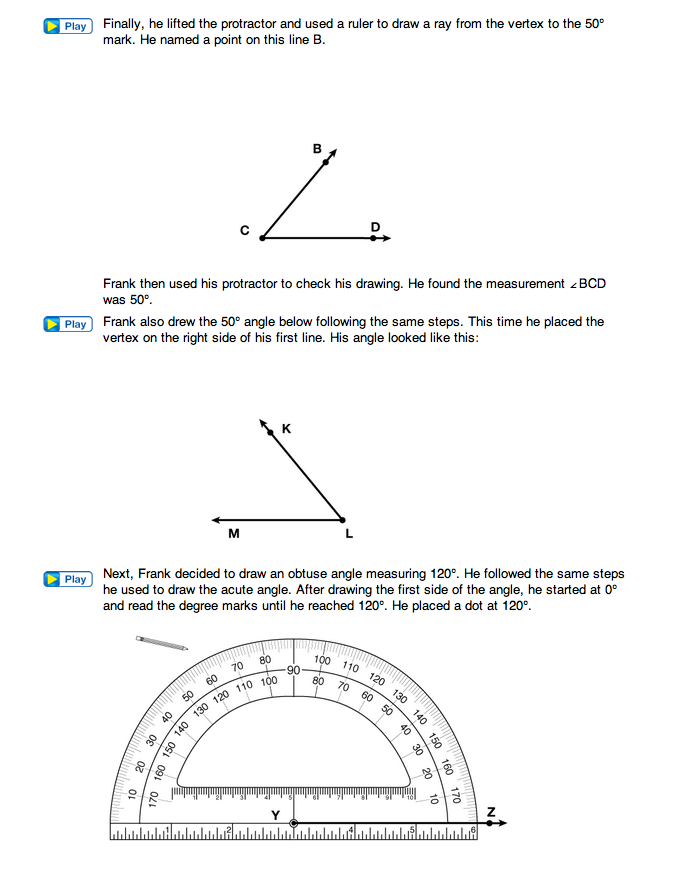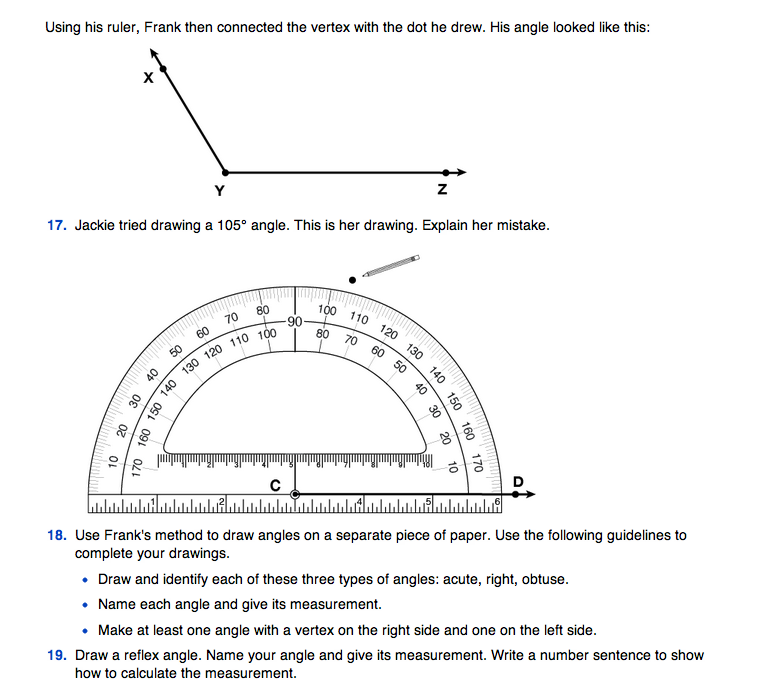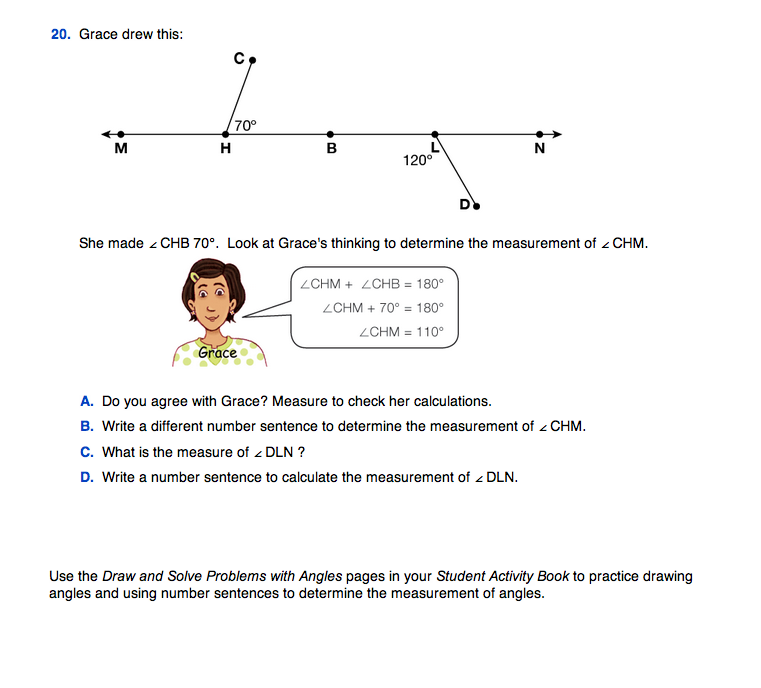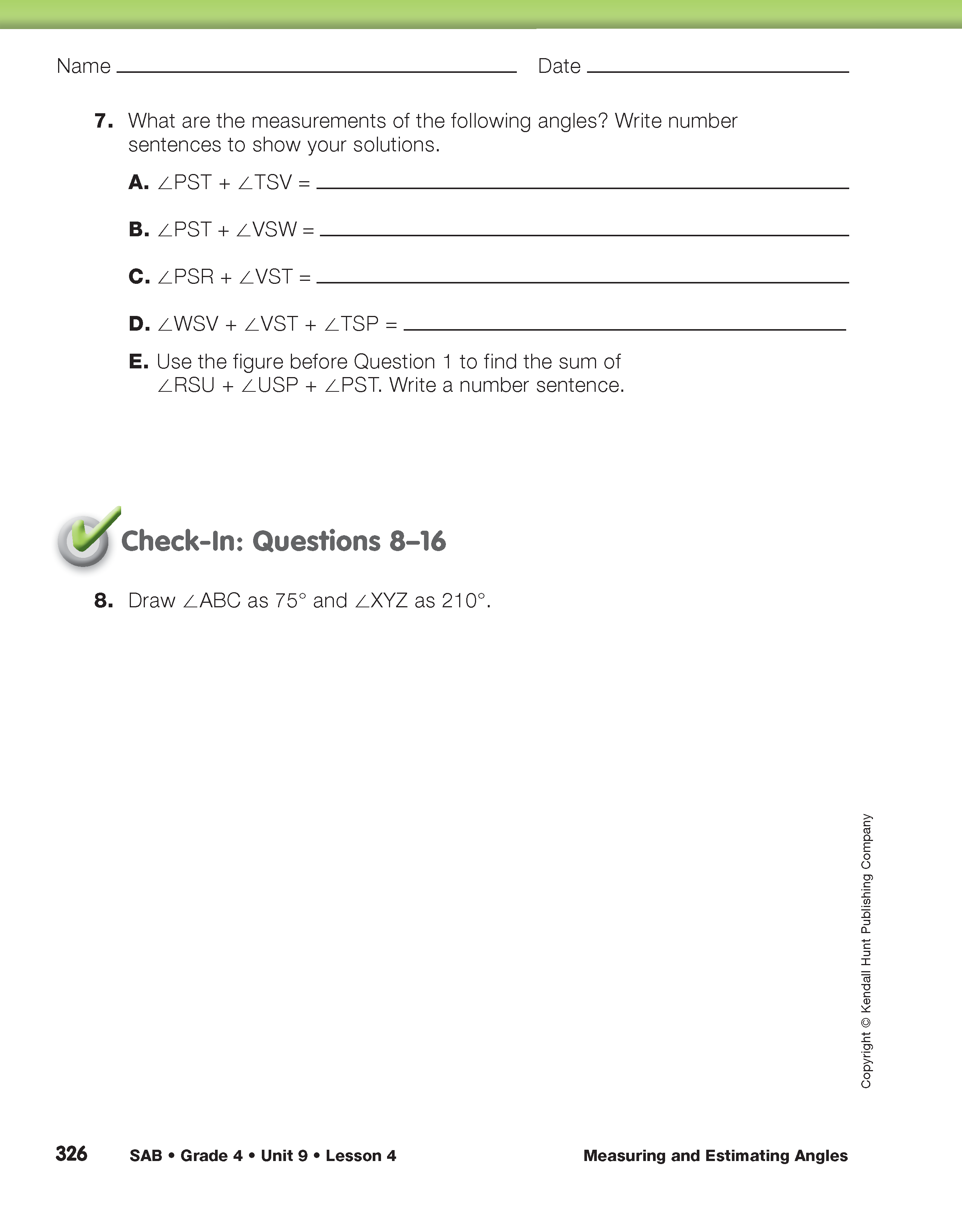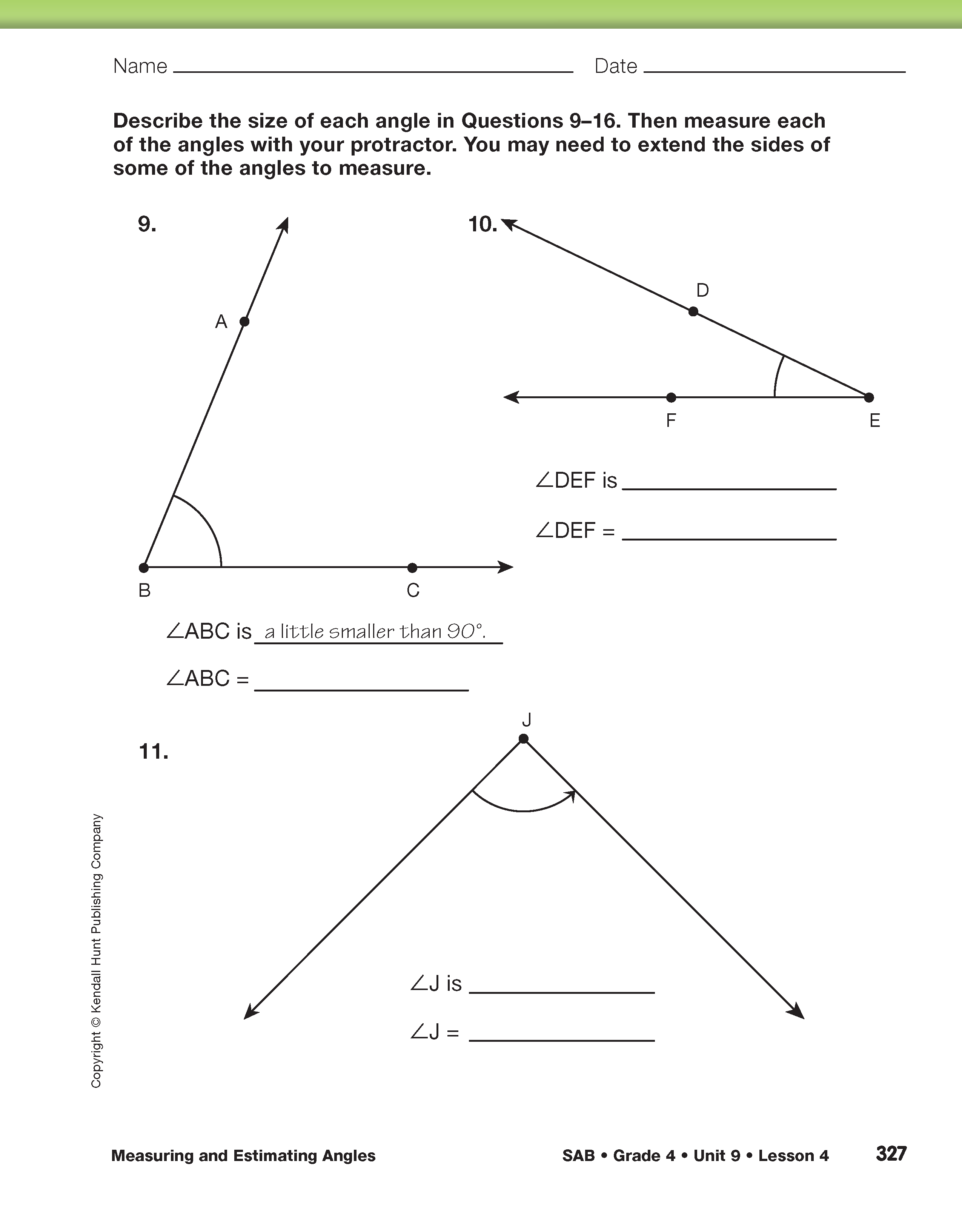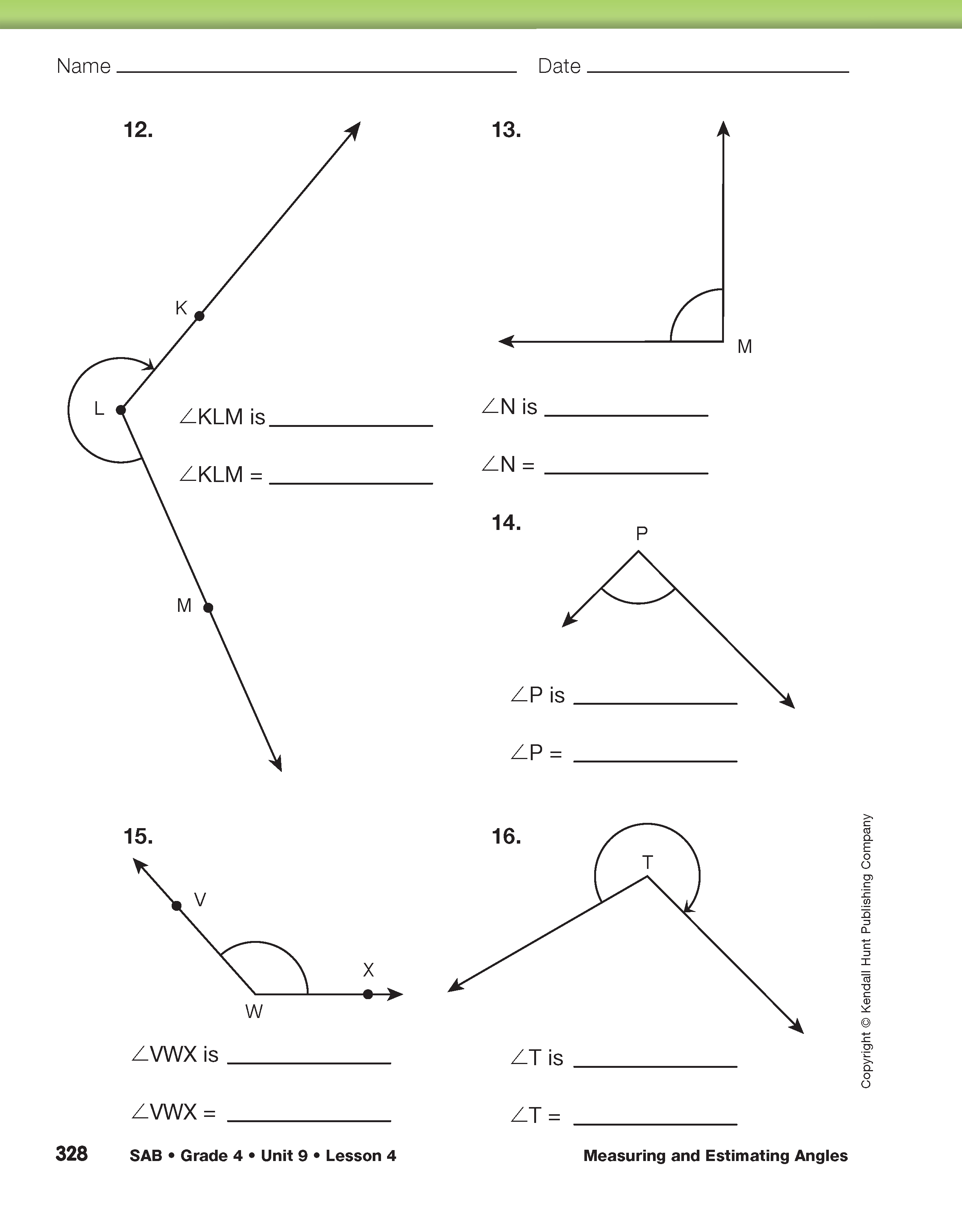Measuring and Estimating Angles
Est. Class Sessions: 1–2Developing the Lesson
Part 3. Drawing Angles
Learn to Draw Angles. Read and discuss Frank's method of drawing angles in the Drawing Angles section of the Student Guide. Demonstrate drawing a few angles on a class display using Frank's method pointing out how to find the 0° mark on the protractor and the correct placement of the vertex. Also, discuss which set of numbers to read on the protractor when placing the dot for the second side of the angle.
In Question 17, students should recognize that Jackie read the wrong set of numbers when placing her dot for the second side of her angle. 105° is larger than a right angle and should be past the 90° mark. The placement of the vertex and the 0° mark indicate she should start on the right side of the protractor and read until she reaches 105° to make this obtuse angle. Reading from the right side of the protractor, Jackie placed her dot at 85° instead of the intended 105° mark.
Preview Questions 18–20 with the class to be sure students understand what to do. In Question 19, students may use Maya's technique (Question 16) to determine the measurement of the reflex angle they will draw. Allow students time to work on and check each other's drawings and measurements. As students work, circulate to aid them in correctly aligning and reading their protractors. Also check to be sure they are correctly identifying, naming, and measuring angles drawn.
Draw and Solve Problems with Angles. Assign as additional practice the Draw and Solve Problems with Angles pages in the Student Activity Book. Students will practice drawing and measuring angles as well as using number sentences to find the sum of angles. Help them understand that they will draw and measure above and below RT. Students will need protractors.













